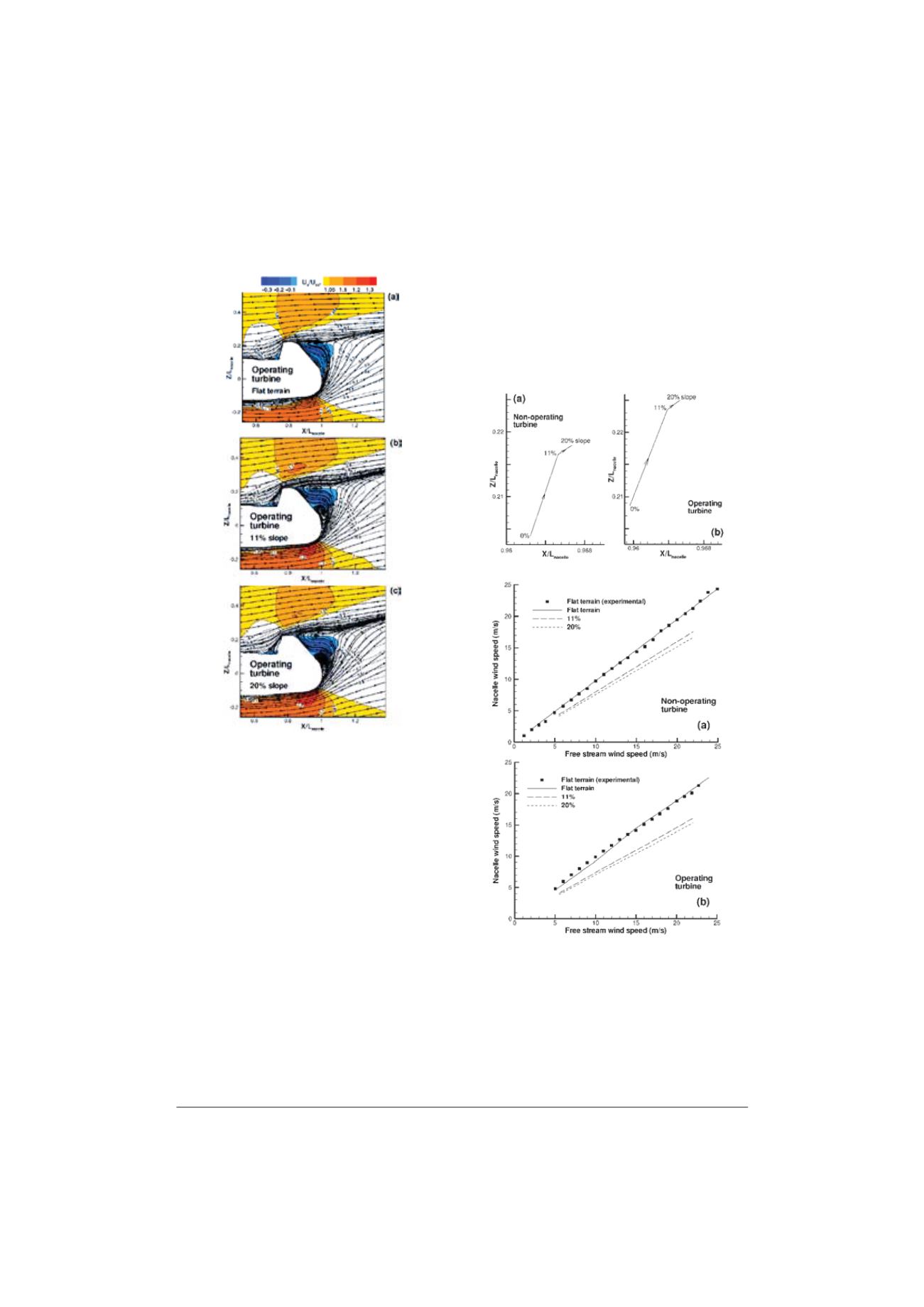
2011 International Conference on Alternative Energy in Developing Countries and Emerging Economies
- 319 -
as escarpment slope increased (Fig. 11), reinforced this
interference.
Fig. 10. Distribution of the axial velocity and streamlines in the vicinity
of the nacelle for operating turbine.
Compared to the non-operating case (Fig. 11a), the
flow in the wake of the operating turbine (Fig. 11b) had
less energy. The top vortex was less convected
downstream, and its movement was directed more
decidedly upward. For both turbine operation modes,
however, the upward displacement of the top vortex was
much greater for the escarpments with 0-11% slopes than
it was for 11-20% slopes. Figure 12 shows non-operating
and operating nacelle transfer functions for various
terrain configurations. Validation of results was done
only for the flat terrain, where good agreement between
numerical and experimental data was observed. The
effect of the escarpment slope on the NTF was greater for
high wind velocity than it was for low values.
The influence of the escarpments on the NTF can be
essentially summarized by two effects. Firstly,
displacement of the NTF to the right was produced by the
speed-up observed at the rotor's location (see Fig. 4).
As discussed previously, this speed-up was nearly
constant for all escarpment slopes. Secondly, the vertical
flow angle caused a downward displacement of the NTF.
This flow inclination was strongly dependent on the
escarpment slope (see Fig. 8). Indeed, the decrease in
nacelle speed between the flat terrain and the 11%
escarpment (with rotor on and FSWS=20m/s) was
approximately 23%; the decrease in nacelle speed
between the 11% and 20% slopes was only 4.6%. This
trend can be explained by the fact that the top vortex
which developed at the rear of the nacelle was at nearly
the same location for the slopes between 11% and 20%;
this limited its impact on flow at the anemometer
position.
Fig. 11. Displacement of the upper vortex behind the nacelle for (a)
non-operating turbine and (b) operating turbine.
Fig. 12. Effects of the escarpments on nacelle transfer function for (a)
non-operating turbine and (b) operating turbine.
B. Roughness effects
Increasing roughness height from 2.5cm to 5cm
implied a decrease in axial velocity (Fig. 13a) at the
domain inlet from the ground to the reference height,
where the two profiles converged; above this height, the
opposite effect was observed. Turbulence intensity (Fig.


